Every hiker has different techniques on what might work for them. I’m a male with a short and stocky build and do not suffer from any circulatory issues. My techniques for keeping my extremities warm will differ from Joan, who is tall with long limbs, female, and runs colder. Out of many years of experience, Joan dialed in some techniques that worked for her. Here are her thoughts on keeping her extremities warm when dealing with Reynaud’s Syndrome.
~~~~
Late fall is one of my favorite times to go backpacking. I love the crisp blue skies and the quiet. But it’s also a time when I have to pay special attention to keeping my hands warm. Raynaud’s syndrome causes my hands and feet to get cold easily compared to a typical hiker or backpacker. When this happens, I lose sensation and dexterity in my extremities, making it difficult (or impossible) to do necessary things like to pack up my tent or open the wrapper of my food. Plus, it’s pretty darn painful!
Over the years, I’ve figured out a few strategies that allow me to backpack in cold and wet conditions. Raynaud’s is highly personal, so what works for me may not for you.
Elsewhere you can find articles about possible treatments, causes, and diagnosis. Here I stick to my practical tips to cope.
Techniques for prevention
Preventing cold hands starts with keeping your circulation system in good shape. Staying well hydrated and avoiding caffeine and alcohol really help prevent the onset of cold hands and numbness. I eat breakfast immediately when I wake up so that my metabolism can be primed to keep my body warm. Then, I eat frequent snacks during the day.
While hiking
Several things can trigger the loss of circulation, but direct contact with cold or wet surfaces triggers the worst symptoms. When I’m hiking, I’ve designed my whole system so I can minimize my fingers’ exposure to the cold. When I am still in my sleeping bag or during the heat of the day, I pre-open bars, pre-make sandwiches, and stash keep snacks and necessities in my pockets, so I don’t have to open my pack to access them when it is cold. I added zipper pulls to my jackets and pack, so I don’t have to remove my gloves to get anything I’ve forgotten out of my pack. When it’s frigid, I keep my hands in the kangaroo pocket of my hoodie as I hike.
Packing up
Packing up on cold and/or wet mornings has a high potential to trigger my cold, numb hands. So I’ve altered my routine to minimize exposure. To prepare, I mentally go through my whole packing up routine to eliminate unnecessary steps and minimize the time spent once I am out of the warmth of my bag. That way, I can remember to transfer water or stash snacks in my pockets and send off my morning InReach OK message while still in the warmth of my shelter. Whenever touching cold or wet gear, I wear my wool liner gloves (with dishwashing gloves over them if it is wet). I make sure to have spare dry liner gloves in my pockets to change them easily if they get wet.
I act immediately when I notice the onset of numbness. If I am packing up, I will stop and put my hands directly on my warm skin, like under my armpits. Then I’ll jump or dance around to get warm. I also have had success wind-milling my arms around to get circulation restarted.
My hammock setup has been streamlined for ease of packing and setting up. I stuff my top quilt into a bag before I even get out of my hammock. My tarp rolls up into DIY snakeskin. I use hardware for the rigging, so no knots are required, and I can rig everything easily with gloves on. I use an oversized bishop bag for my hammock and underquilt. To make setup fast and simple, I attached my underquilt to my hammock and just left it on there. I also leave my sleeping clothes zipped inside my hammock. So when I pack up, it all goes into the bishop bag, and when I set up, nothing touches the ground, and everything is instantly right where I need it- simple and easy, so my hands stay warmer.
My layering system and other gear
A glove and mitten layering system keeps my hands warm while allowing dexterity. My base layer gloves are wool surplus liner gloves. (To give proper credit, I learned about these from PMags years before I met Paul in person!) I like these gloves because they are thicker and dry easier compared to other liner gloves. Plus, they are inexpensive. I never touch anything cold without my gloves on! Eventually, they will get wet, but that’s why I carry two pairs. The second pair is always in my pockets, ready to go or “on the dry cycle.” Full disclosure- I discovered that if the gloves are really wet and raining a lot, the wet gloves dry fastest directly against my skin- one tucked into my bra and the other in my underwear. It sounds funny, but it works!
Wool mittens are the next insulating layer. They need to be large enough to fit over the gloves. They keep my fingers much warmer than gloves since all the fingers are snug together. But I have to take them off if I need to use my fingers. In moderate temperatures, I wear surplus wool rifle “trigger” mittens. In extreme cold, my boiled wool mittens with a fleece lining are pillows of warmth. They also can be used as literal pillows at night!
Dishwashing gloves fit over the wool gloves in wet conditions. I used to use nitrile gloves, but they tear too easily in the conditions I use them in, and they don’t protect my wrists. I will use MLD eVent rain mitts in lighter rain or snow.
Having gloves and mittens is essential, but that alone doesn’t do enough because the blood flow still has to make it out all the way to my fingers and toes. So, I wear DIY “wristies” or what runners call “sleeves” to keep my wrists and lower arms warm, especially where the veins are close to the skin. I sew my own wristies, which are like sun gloves, only made with an old Capilene base layer shirt so they are warmer and mitten-style, keeping my fingers warmer together.
Finally, I tuck chemical hand warmers inside my mittens for extreme cold or snow.
Warm Feet
While hiking in wet and snowy conditions, I use bagtex— oven bags over my socks. Another trick I learned from PMags a long time ago. Slipping on my down booties every night is heavenly. I used to think they were too extravagant, but now I sleep so much better because my feet are toasty, and I don’t wake up in the middle of the night with frozen, numb feet anymore. In particularly cold weather, I’ll pair them with another PMags surplus special and use M65 liner pants.
A few more thoughts
Maybe this all sounds like a lot. It certainly makes me frustrated when I add up the weights of my mitten/glove system. However, this is what works, and when I don’t do this and don’t have this gear, I suffer painful, debilitating cold hands—one of the scariest times during a stormy day in Georgia on the BMT. My hands were so frozen that I could not open my backpack to get out food for several hours. I felt totally helpless. These are the steps that I know I need to take, so that doesn’t happen more often. If you’ve had this problem, you will know. Hopefully, there are some suggestions here that will help you make it possible to get out even when it’s cold and wet.

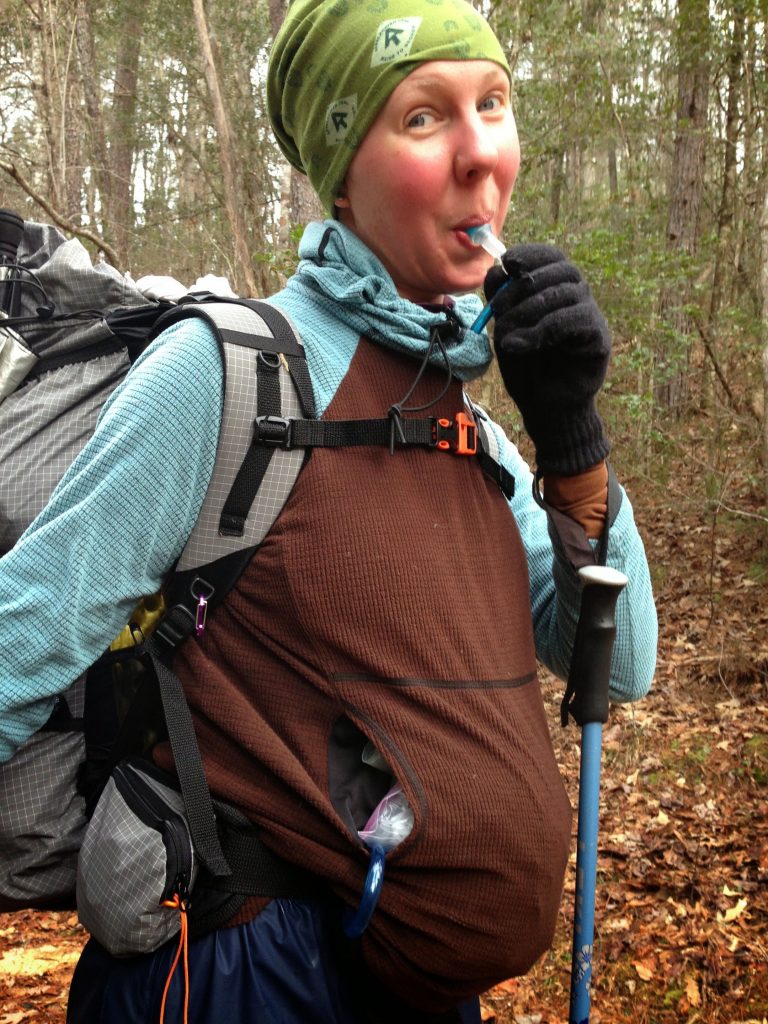
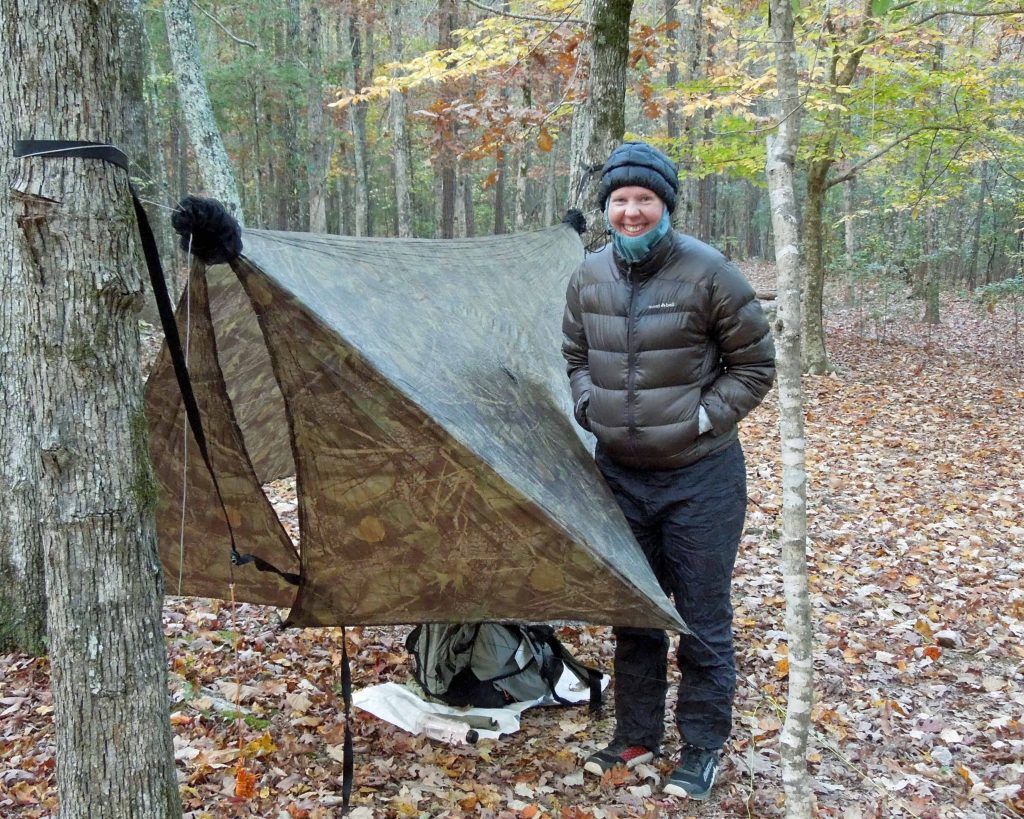
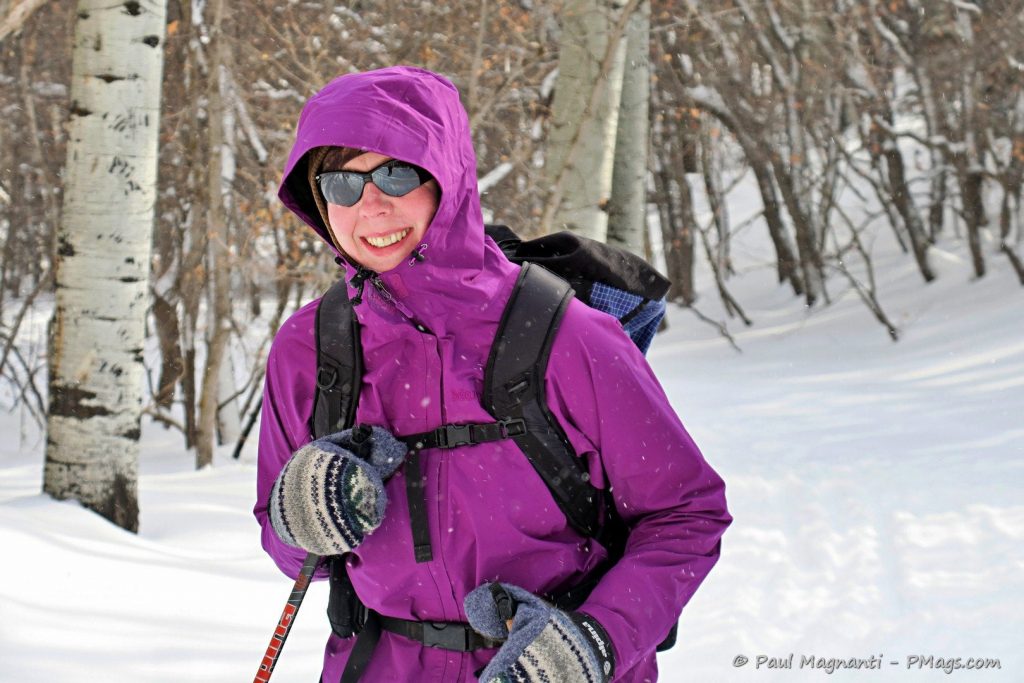
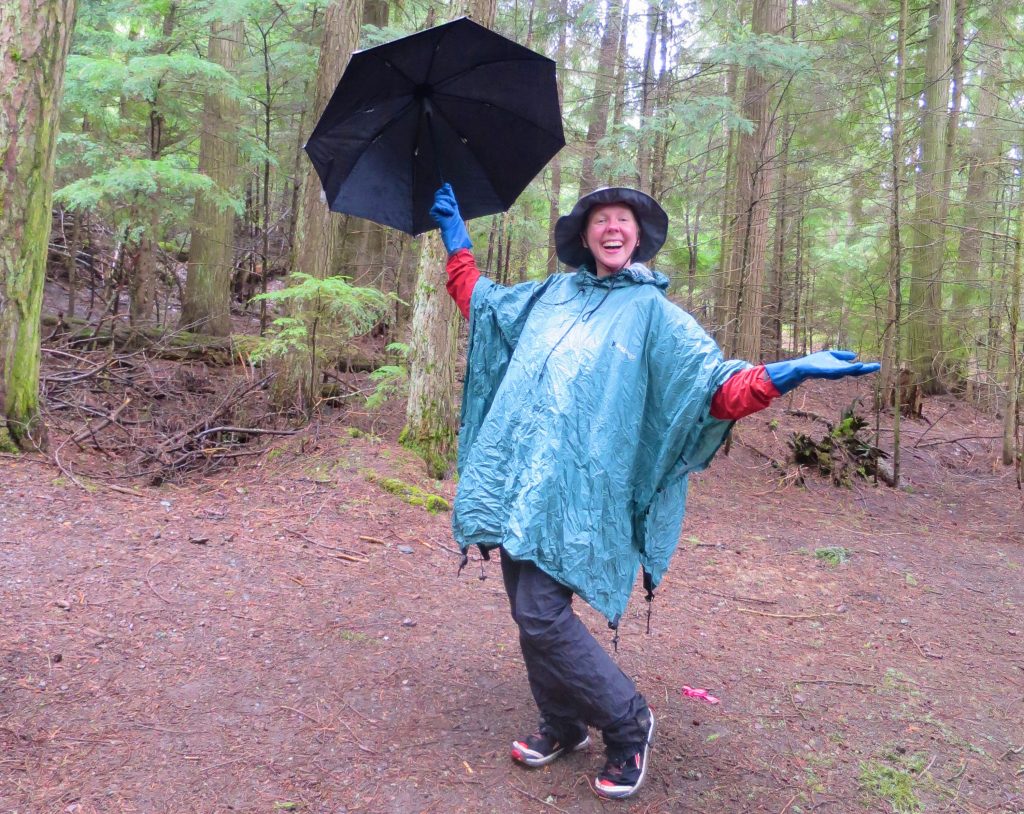
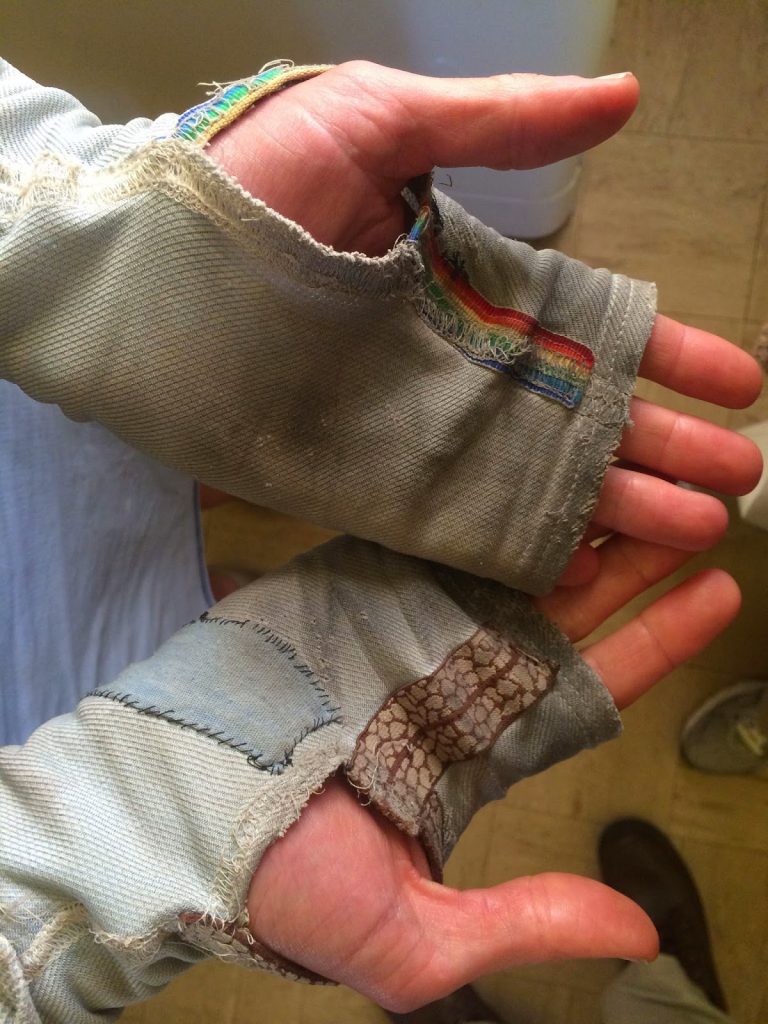
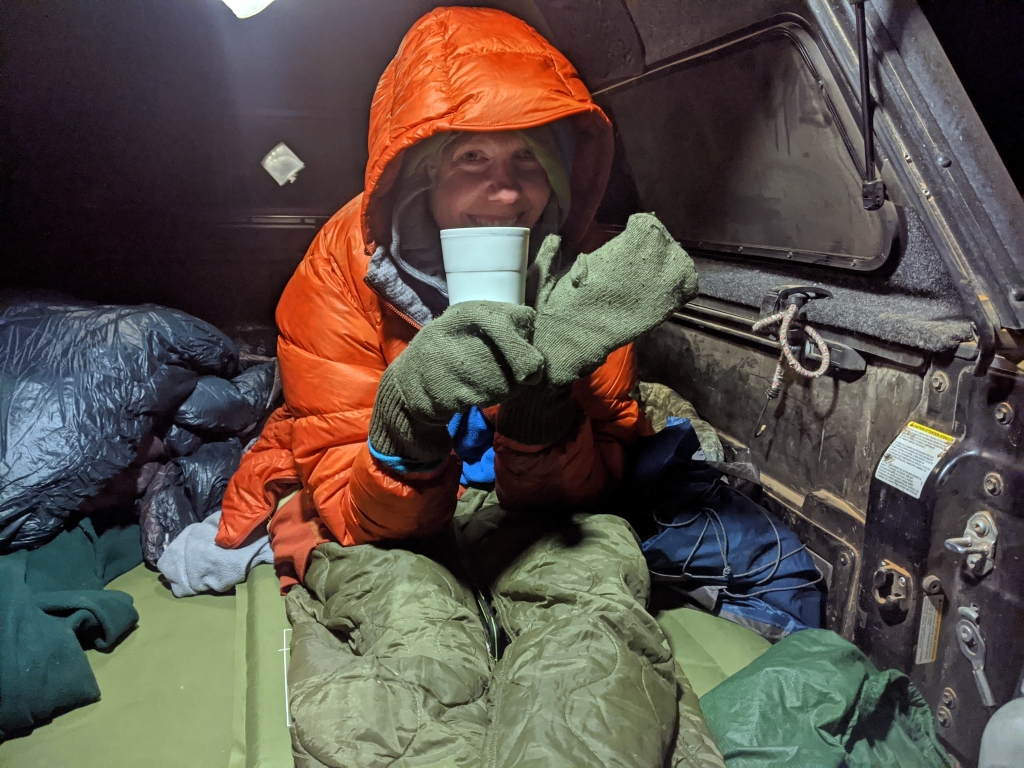

Thank you for this article. My wife suffers from this disease and it really gives her pause when we go out hiking on anything but the perfect day. The practical advice is terrific because it really highlights how a few preparations can really turn a miserable trip into a rewarding one.
Sure hope this helps!
Hi! What hammock tarp do you use? I also suffer from Raynauds, although it affects my feet and toes more than my hands. I still need to streamline my morning routine to keep my feet from becoming numb blocks, making early morning hikes more difficult. Your tarp looks like it keeps the cold out better than my open ended tarp, which would help my feet stay warmer.
Hi Lynn- The tarp doors on my Hammock Gear standard tarp with doors do a better job at keeping at the wind, but I still have to use careful site selection and orient the tarp with the broad sides facing the wind. For packing up the tarp, I like mesh sleeves since you can easily roll it up and minimize touching it- I sewed my own but they are similar to these. Once the sleeves are on, then I roll the tarp like making a jelly roll and use one end of the ridgeline to compress the bundle and wrap… Read more »
Joan, you are awesome!!! Thanks so much for the multitude of ideas for things that Work, so we can enjoy (& function!!) even in the Cold times!!
A good friend who is 59 has had reynaud’s forever takes a product by Life Extension called Youthful Legs #02252 that completely eliminates the problem as long as she takes it. Takes effect in a few days. The reynauds will return when you quite taking it.
Thanks for the tip. But, I’m often leery of the efficacy of supplements esp without further peer-reviewed studies.
More info. The TL;DR is that it works in a very small amount of people and not much overall. I am sure there are other studies as well.
https://www.sciencedirect.com/topics/neuroscience/diosmin
EDIT: And, of course before taking any supplements, also consult with a physician to see if there are reactions with current meds.
I’ve suffered w/ Reynaud’s for decades. Another effective tactic is pre-conditioning. The idea is to get your body to accept that it’s OK to send blood to the extremities even when the core isn’t toasty-warm. Do this by spending 10-15 minutes at a time outside in cold weather with minimal clothing, so that you’re uncomfortably cool to the point of mild shivering. At the same time, immerse your hands (or feet) in a bath of hot-tub temperature water. I find a personal size cooler to be handy for this. Instead of loosing heat at the extremities, your core is gaining… Read more »
Thank you for the input. This article focused more on practical ideas in the field rather than medical or drug treatment. Joan and I strongly suggest consulting with a physician when treating the underlying causes of medical issues before pursuing home treatments.
Joan, thanks very much! In the last few years, I have had more issues with hand and foot function in the cold. The system you have filled in a few gaps for me – I’m finally going to go for the down booties, the EE Climashield Apex booties have not cut it for me. Fluffy wool sleep socks (keeping loose enough for circulation) are also key in my experience. I wish I could sew! I will have to try the wristies and dishwashing glove tricks – Alan Dixon just posted a review of the winter Showa WP/B gloves, I may… Read more »
Thanks, JP. I agree that there is not just one solution. Glad this helped. Hope the new gloves and booties help you enjoy your trips more. Happy New Year.
This is so helpful, thank you for posting all the information!! I’ve been itching to go camping in less ideal conditions but my Raynaud’s always gives me pause. It’s great to see that it is actually manageable!
Joan, you are Awesome!! Thanks for your great ideas :- )